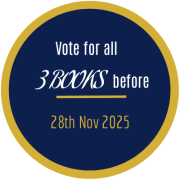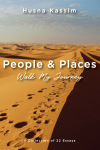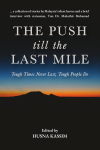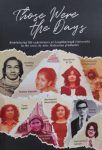A Little Romance on Trans – Mongolian Express
Beijing Central station was a sea of people and the van dropping us was not allowed into the station. It probably would take an hour or so just to get inside the station, judging by the size of the crowd building up. I have never seen so many lines queuing up to buy tickets before. There were at least 30 lines that morning. Getting into the main building was no mean feat, given the pushing and the jostling crowd. It was absolute chaos. I remembered Sam the Chinese van driver telling us “In Beijing there is no time to be polite”. There was no dignity at the station that day. Proper queuing up would have been more efficient.
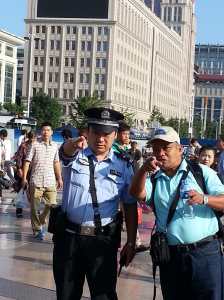
As the Trans Mongolian Express K3 train started pulling out of Beijing Central station, I felt excitement mounting. After all the trip was in my bucket list. I also felt a little hungry. I heard that food served in the restaurant on the Chinese buffet coach was similar to hawker food found in Kuala Lumpur. And the good news was that it was halal. On the contrary food served on the Mongolian buffet coach was rather bland, especially to a palette used to everything hot and spicy.
As I got to the buffet coach, I noticed it was nearly full. I was counting on meeting some interesting people travelling on the train. I found a quiet corner and began scribbling some half forgotten details about Beijing in my note book while sipping some green tea. Opposite to my table was a couple of bubbly middle-aged British ladies and a young male deep in conversation interspersed with giggles like two teenage girls, sharing some jokes. Thank God for mobile technology, I was sufficiently entertained so as not to feel completely abandoned.
After some thirty minutes, my text neck left me stiff and uncomfortable. I had to refocus. Curiosity got the better of me and I decided to initiate a little conversation with my neighbour. I said hello and the two ladies, probably in their early 50s, responded with a smile. We started talking.
They were from UK; one was a business development manager and the other was in some hospitality services. The young male happened to be a Russian model I was told. I recognized him while we were all waiting for the K3 train on the platform back in Beijing Central station. I could tell he was a model by his gait and a polished look of self-indulgence.
When the train reached Ulan Bator, a young Mongolian girl and her friend boarded the K3 and occupied the cabin next to ours. A big buxom lady later joined them. The Russian lady was a teacher and even though neither she spoke any English nor I any Russian, I was able to learn through the Mongolian girl, that the Russian lady taught Russian language to a school in Ulan Bator. Russian language was a second language in Mongolia just like English was to Malaysia.
The Mongolian girl, Tsatsral, was heading to St Petersburg to register for a university education. It seemed that secondary school leavers in Mongolia tend to register for college or university education in Russia. Mongolian population was about 2.4 million(in 2014) and 50% of these were women. It was therefore understandable that Mongolia wanted to utilize their women workforce efficiently. Women’s high level of enrolment in higher education reflected female dominance in medicine, nursing, teaching and professional child care. This same trend existed in Malaysia from as far back as ten years ago. Unlike the concern with female purity found in southwest, south and east Asia (Malaysia included), the Mongolians preferred fertility to purity. Mongolian women however although not shy, remained subordinate to men, as in many Asian country, I supposed.
While walking down the K3 corridor towards the buffet coach I met a Chinese couple on their honeymoon. They were planning to take a photo on the platform at Malinsk train station. The couple were from Beijing and decided to celebrate their honeymoon in St Petersburg. Taking the Trans Mongolian Express seemed to be the most romantic journey to embark for couples.
There is something undeniably romantic about train travel. James Blunt in his song “You’re beautiful” dealt with fleeting moments of aching, unrequited longing experienced on a train journey. A study by East Coast Trains uncovered that 1/3 of Brits believed that rail travel was synonymous with finding “the one”. Why is it that people were more willing to chat to strangers on trains? Train journeys tend to be more enjoyable, with respect to scenery, more spacious, and trains always arrive right in town with no crazy long-line check-ins beside being more affordable. The next time you feel like some romance, try spending 6 days on the Trans Mongolian Express K3…you will never know who you meet.
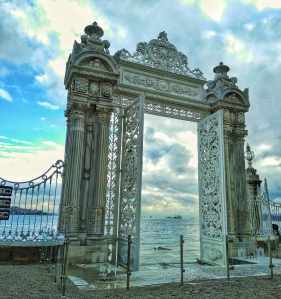
UNFORGETTABLE ISTANBUL
“If there was one single glance to give the world, one should gaze on Istanbul” says the French writer, Alphonse de Lamartine and I share his fascination with the city. Just as Hollywood never had enough of the city, I try to visit the city every few years to reminisce and rediscover. Hollywood shot some top 10 movies in Istanbul. Imagine the opening scene of the movie “Skyfall” with Bond in a motorbike chase of an enemy operative on the rooftops of Istanbul’s Grand Bazaar. Crime fiction British Dame Agatha Christie wrote her famous novel “Murder on the Orient Express” at a hotel in Istanbul called Pera Palas Hotel. The novel centred on a detective, Hercule Poirot, travelling on The Orient Express train that ran between Paris and Constantinople (Istanbul) from 1883 to 1977.
Istanbul’s Historical Journey
Istanbul has been known by several different names, the most notable besides the modern Turkish name, being Byzantium,
Constantinople and Stamboul. The different names are associated with the different phases of its history and the different languages. First it was the Greeks’s King Byzas who called the city by the name, Byzantium, a Greek name for city on the Bosphorus. Then the Persians ruled it briefly after which came Alexander the Great. Then the Romans under Emperor Septimus conquered the city after which Emperor Constantine the Great made Byzantium the capital of the entire Roman Empire and called it Constantinople (www.greatistanbul.com).
Istanbul’s later history was full of besieges: by the Arabs, then by the Barbarians and later by the Crusaders who destroyed and took the wealth. In 1453, The Ottoman Turks led by Sultan Mehmet II, conquered Constantinople. It was renamed “Islambol” (city of Islam in Turkish), the capital city of the Ottoman Empire. Ottoman rule lasted until World War I when Istanbul was occupied by the Allied Forces. After years of struggle led by Kemal Ataturk against the occupying forces, the Republic of Turkey was born in 1923. Mustafa Kemal Ataturk, the nationalist, was responsible for the birth of the Republic of Turkey.
Istanbul’s Districts
Istanbul is the largest city and a principal seaport of Turkey. The city is made up of 39 districts with 25 districts in the European side and 14 districts in the Asian side which include some districts that we probably passed through such as Besiktas, known for Dolmabahce Palace and the internationally renowned football team; Fatih (Istanbul’s largest district & prime tourism area including Sultan Ahmet area); Bey, Beyoglu (Istanbul’s Soho with Istiklal Caddesi as the main thoroughfare, Taksim, bohemian Cihangir); Atakoy (upmarket waterfront property), etc.

The Dolmabahce Palace is located in the Besiktas, on the European coast of the Bosphorus and served as the administrative centre of the Ottoman Empire from 1856-1887 and 1990-1922. It has 285 rooms, 46 halls, 6 baths (hammam) and 68 toilets. The palace was home to 6 sultans (up until the abolition of the Caliphate in 1924) and where founder of the Turkish Republic,Kamal Ataturk died..
The bosphorus
A cruise down the scenic Bhosporus Strait is worthwhile. The Bhosporus waterway runs between the Black Sea on the north, Marmara Sea on the south, continent of Asia to the east and Europe to the west. Lining the Bhosporus are beautiful homes of the rich and famous. Seaside estates along the straits cost anything between 28 to 300 million Turkish Lira (according to mansionglobal.com). The most expensive property was sold to a Qatari businessman Abdul Hadi Mana Al-Hajri in 2015 for a whopping US106 million.
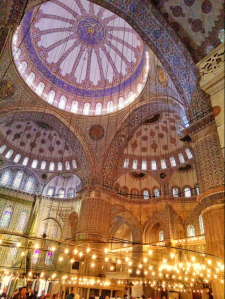
Sultanahmet Area
The tours we took to heritage sites were mainly around Besiktas, Beyoglu and Fatih districts in Istanbul. Sultan Ahmet area is in Fatih, where attractions like the famous Blue Mosque, Hagia Sophia, Topkapi Palace, Grand Bazaar, Spice Bazaar are located. The Blue Mosque is the most important mosque in Istanbul standing next to the Byzantine Hippodrome in the old city centre. The mosque (also known as the Blue Mosque because of its bluish tiles on the wall)was built between 1606 to 1616.
Unlike many great architectural monuments built to signify victory, the Blue Mosque was built by the 13 year old Sultan Ahmet 1, after the Turkish military was defeated by the Persians in 1600s.
In the quieter part of the Sultan Ahmet area, are shops selling beautiful colourful mosaic and pendant lamps . And if you walked further towards Gazi Atikali Pasa Camii, you might come across a Turkish peddling prayer beads or sometimes people call them worry beads for zikir purposes .
Beautiful Turkish pendant and mosaic lamps, seen here in Anatolian colours and signified Turkish culture. The traditional form of lamp were first used in Istanbul bathhouses, mosques, and similar places
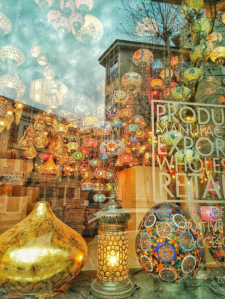

Zikir beads or tasbih being peddled by a Turkish near Gazi Atikali Pasa Camii in Sultanahmet area. Zikir beads or prayer beads, also called, worry beads are made from kuka wood or boxwood, or semi-precious stones such as agate.
We visited the Spice Bazaar as part of the Dolmabahce Palace & Two Continents Tour we signed up for. The Spice Bazaar was originally named the Egyptian Bazaar, built using the revenue from the Ottoman eyelet of Egypt in 1660. The bazaar was and still is the centre for spice trade in Istanbul but other types of shops have been added on in the recent years. There are over 700 shops in the bazaar. Ceramic shops were some of the shops that you can find in the bazaar. You can also find beautiful shawls and pashminas at a bargain in the Spice Bazaar.zikir purposes .

Beautiful Turkish pendant and mosaic lamps, seen here in Anatolian colours and signified Turkish culture. The traditional form of lamp were first used in Istanbul bathhouses, mosques, and similar places.
The Spice Bazaar, is one of the largest bazaars in the Eminonu quarter of Fatih district of Istanbul (after the Grand Bazaar). It is one of the biggest covered bazaars in Istanbul.

Taksim Square, Beyoglu
Taksim is situated in Beyoglu, the European part of Istanbul and the heart of modern Istanbul. It is a major tourist and leisure district, famed for its restaurants, shops and hotels. The most important monument at the Square is the Independence Monument. Taksim Square is an important hub for public transportation, acting as the main transfer point for the municipal bus system for Istanbul. Taksim Square promised a vibrant nightlife if pub-crawl is your thing. It is where most festivals are held such as the recent 2017/2018 New Year celebration. Taksim Square is also a landing for flights of doves and you can actually feed seeds to them. If you happen to be at the Square, be vigilant however, because nothing is as it seemed. I was caught off-guard by an innovative form of begging by the Birdman
The Birdman in Taksim Square, feeding the doves. This was where the 2017 New Year celebration was held. Taksim Square is an important hub for public transportation, acting as the main transfer point for the municipal bus system for Istanbul.
Istiklal Street
The Taksim Square led to Istiklal Street. If you walk down the Istiklal, you can listen to some street performers playing their music, or stop for kebab at the restaurants, or shop at the department stores, art shops and bookshops, displaying priceless Sufi books such as Shems Friedlander’s “Forgotten Messages” on the life and time of the famous Sufi, Rumi.

At the end of the Istiklal Street, you can actually sit down to have a cup of tea or cay, or a glass of pomegranate juice or sample the roasted chestnuts . Pomegranate is native to Turkey, both in the coastal as well as the mountainous areas up to altitudes of 1000 metres, mainly in the Aegian, the Mediterranean and the South western Anatolia regions.
A vendor selling roasted chestnuts on the busy Istiklal Street in Taksim. The Istiklal Avenue-Tunel nostalgic tram line starts in Taksim.
A Symphony Of Sounds and Scents
Istanbul is the place to be. There is the Turkish cuisine, the hammam experience, excellent museums, the architecture, open-air markets and bazaars, grand imperial mosques and historic churches. Istanbul is a symphony of sounds and scents.
The haunting call for prayer or azan by the muezzin reverberating over Istanbul five times a day, from the minarets of over 3000 mosques. Then there is the sound of the bustling city; the street musician playing the accordion on the corner of the Istiklal; the sound of laughter; and the distant sounds of the sky larks flying over the Bosphorus. Then the scents emanating from all corners of Istanbul. The unmistakable aroma of Turkish coffee; the hookah tobacco; exotic spices and herbs at the Spice Bazaar; the heavy oriental musk perfumes on the street; the sweet smell of apple tea, not forgetting the smell of sweat on the tram on Istiklal.
Then we have the onslaught of Istanbul by tourists with an endless appetite for the exotic. A lady tourist travelling alone on her way back to Bangladesh from Rome. She was engaged with United Nations (UN) and currently working for the UN funding body and the Bangladesh government. She must be doing well because the next time I caught up with her, she was ready to buy off a carpet for TL6000 without so much as a blink. And I always thought bargaining is part of Asian culture..
And then there was the expatriate from Kerala travelling with his spouse. He looked like a retired Hindi film star. He had been employed in Bahrain for 34 years at a time when the Bahrain Dinar was three times the value of the US Dollar. It seemed quite a number of Indian tourists on Istanbul stop-overs were expatriates working in the Middle East. There is another wave of tourists that landed on the shores of Istanbul….loud tourists with deep pockets from Mainland China.
Watching the Bosphorus at sunset from the grounds of the Dolmabache Palace, reminded me of a famous Napoleon Bonaparte saying : “If the Earth were a single state, Istanbul would be its capital”.
